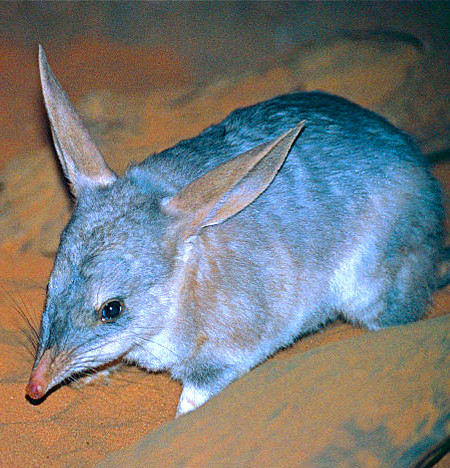Bilby DNA decoded
 Scientists have successfully sequenced the entire genome of the Australian bilby.
Scientists have successfully sequenced the entire genome of the Australian bilby.
The achievement provides a detailed genetic blueprint of the bilby, which is crucial for understanding its growth, evolution, and conservation.
Bilbies hold cultural significance for Aboriginal Australian communities. Despite their lesser-known status among marsupials, bilbies are notable for their large ears, backward-facing pouches, and their role as burrowing nocturnal omnivores.
They play a significant ecological role by using their strong forelimbs and long claws to dig for food, which helps in soil turnover and organic matter decomposition in Australia's deserts.
Historically, there were two bilby species: the Lesser bilby, which became extinct in the 1960s, and the Greater bilby, which now occupies only 20 per cent of its former range, primarily in the central deserts of Western Australia and the Northern Territory.
The bilby populations experienced a sharp decline following European settlement due to the introduction of feral cats and foxes, and competition for food with rabbits.
Currently, bilby populations are managed in the wild by Indigenous rangers, with about 6,000 individuals living in fenced sanctuaries, islands, and zoos.
The genome sequencing project was led by Professor Carolyn Hogg of the Australasian Wildlife Genomics Group at the University of Sydney.
The team utilised DNA from a deceased zoo bilby to sequence the genome of the surviving greater bilby.
Remarkably, they also created the first genome for the extinct Lesser bilby from a skull specimen collected in 1898.
“The Greater bilby reference genome is one of the highest quality marsupial genomes to date, presented as nine pieces, representing each of the bilby chromosomes. It offers insights into biology, evolution, and population management,” Professor Hogg says.
A reference genome serves as a comprehensive guide, akin to having a puzzle box lid, enabling scientists to understand the bilby's unique characteristics, such as its sense of smell and desert survival strategies without drinking water.
This genetic information is pivotal for managing the bilby metapopulation in captivity and in the wild.
It aids in selecting individuals for translocation and release to maximise genetic diversity, thereby enhancing the population's adaptability to changing environmental conditions.
Professor Hogg emphasises the importance of the reference genome in conservation efforts.
“Everything takes four times longer and is four times more difficult when you don’t have a reference genome. We have accelerated science to ensure the ongoing survival of bilbies,” he said.
More details are accessible here.







 Print
Print